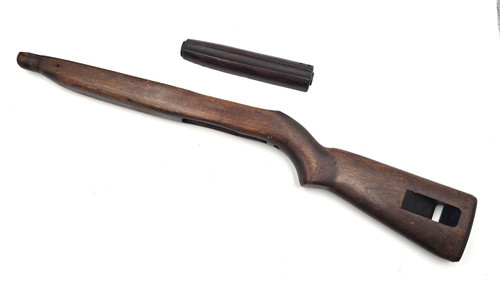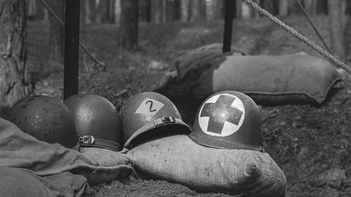10 Interesting Facts About the M1 Carbine
Oct 22nd 2025
The M1 carbine was developed to provide American troops with a lightweight battle rifle that was smaller and more maneuverable than the M1 Garand, but more powerful than the Thompson or the 1911; the result was a .30-caliber Carbine that has since become the stuff of legend.
Here are 10 interesting facts about the M1 carbine; see if you knew them.
- The M1 carbine was in service longer than you likely thought. Everyone knows the M1 carbine was in service at the end of the Second World War, and it’s pretty well known as a light rifle used in Korea, too, but this platform was actually in service for quite a bit longer than that - Americans carried it until 1973, and many other countries still do today. In all, the M1 carbine was used in service in more than 30 countries, on every continent.
- Selective-fire variants were produced. Wartime constraints made it impossible to release the first version with a selective-fire capability, but the M2 and M3 that followed it were capable of fully-automatic fire. The first version was semi-auto only but later iterations could better fill the role of an “assault rifle.”
- There is a paratrooper variant. There is a variant of the M1 known as the M1A1, which has a wire-frame, side-folding stock which minimizes its overall profile. This variant was issued to airborne forces and a unique feature of the design is that the stock neither locks open nor closed.
- The original M1 carbine had no bayonet lug. The first M1 carbine had no bayonet lug and so troops that were issued it were also issued M3 fighting knives, also known as M3 trench knives. However, field requests to have the design upgraded with a bayonet lug resulted in later M1 carbines being reformatted with a lug attached to the barrel band. Once it was outfitted with a bayonet lug, it was intended to accept the M4 bayonet which was modelled on the M3 fighting knife.
- The M1 carbine is not related to the M1 Garand. Despite the common name, the M1 Garand and carbine are not related. The “M” in this case follows US Army naming convention for “model” as in the M1 helmet, also the first of its model, which is also obviously not related to the Garand or the carbine.
- The M1 carbine was developed partially in response to Germany’s Blitzkrieg tactics. The Army determined it needed a rifle that was lighter than the M1 Garand but more powerful than the Thompson or the 1911’s .45 ACP. The new rifle was more compact, less likely to snag on brush, and intended to equip support troops that might need to face heavily armed and quick moving opponents.
- The .30 carbine cartridge is more powerful than you might think. The .30 Carbine is often maligned for its anemic performance, and to be fair it is far less powerful than the .30-06 of the Garand. There are tales of soldiers bemoaning its inadequate power, and some states do not allow it for deer hunting for that very reason. However, despite looking like a longer handgun cartridge, the .30 Carbine cartridge is more than twice as powerful as the .45 ACP.
- The M1 carbine was the first platform to leverage wide-scale use of ammo loaded with non-corrosive primers. Because the platform is gas-operated but was not expected to be stripped and cleaned in the field, if corrosive primers were used in this firearm, they would quickly result in the degradation not just of the bore and bolt, but of the gas system, effectively incapacitating the platform. As a result, .30 Carbine ammunition was manufactured without corrosive primers and on a widespread scale.
- Soldiers reported an interesting fault with the magazine release button. Apparently, early reports from the field indicated that some soldiers mistook the mag release button for the safety button, inadvertently dropping the mag when they wanted to switch the rifle from “safe” to “fire.” As a result, the rifle was re-outfitted with a safety selector lever instead of a button.
- There are M1 clones that are not chambered in .30 Carbine. While most M1 carbines were chambered in .30 Carbine, there have been clones made in other calibers. For instance, Chiappa manufactures an M1 clone called the M1-9, chambered in 9mm.

Here for M1 Carbine Parts?
Hopefully you found these facts interesting and that you learned a thing or two - not all of them are well-known, even to self-proclaimed history buffs.
In any event, if you have an M1 carbine or variant and need parts, or just an M1 carbine magazine? Take a closer look through our collection and get in touch with us directly if you don’t see the part you’re looking for; we can help you find it.

